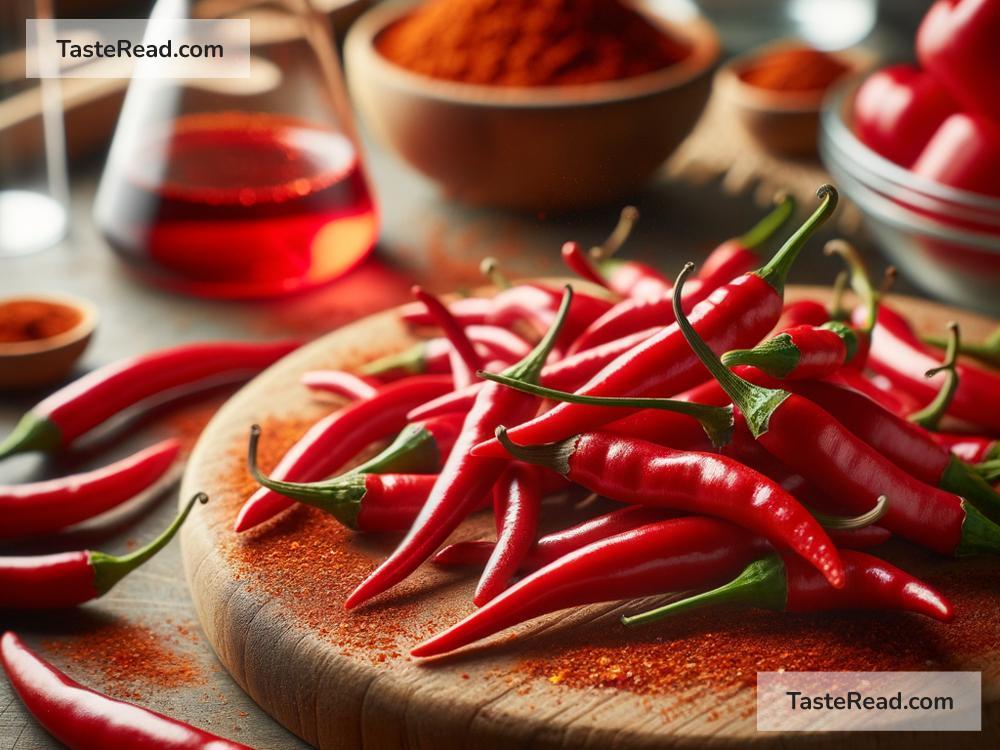The Science Behind the Spicy Taste of Chili Peppers: Exploring Capsaicin and Its Friends
Have you ever bitten into a chili pepper and immediately felt your mouth burn like it was on fire? That fiery sensation is something many people love—and some fear! But what exactly causes that spicy kick in chili peppers? The answer lies in a group of fascinating chemical compounds, the most famous one being capsaicin. Let’s dive into the science behind why chili peppers are spicy and what makes them such a special ingredient in cuisines worldwide.
What Makes Chili Peppers Spicy?
The spicy taste in chili peppers comes from a chemical compound called capsaicin (pronounced kap-SAY-uh-sin). Capsaicin belongs to a group of natural chemicals known as capsaicinoids, which are unique to chili peppers. These compounds do not actually cause any physical damage to your mouth or taste buds, but they do trick your body into thinking it’s feeling pain or heat. That’s why eating chili peppers can feel like licking a flame!
How Does Capsaicin Cause the Spicy Sensation?
Capsaicin works by interacting with the sensory nerves in your mouth and skin. Specifically, it binds to a receptor in your body called TRPV1 (transient receptor potential vanilloid 1), which is responsible for detecting heat and pain. Normally, this receptor is activated when you eat something hot in temperature, like soup, or come into contact with something physically sharp, like a thorn. Capsaicin makes your TRPV1 receptor act in a similar way, even though there’s no actual heat or harm involved. The result? Your brain is fooled into thinking you’re experiencing burning pain!
This reaction doesn’t just stop in your mouth. If you’ve ever accidentally touched your face or eyes after cutting chili peppers, you know it can cause a painful burning sensation. That’s because capsaicin interacts with the TRPV1 receptors located on your skin, too. This explains why chefs often wear gloves when handling extra-spicy peppers like habaneros or ghost peppers!
Why Are Chili Peppers Spicy in the First Place?
As much as chili peppers wreak havoc on our mouths, their spiciness actually serves an important purpose in nature. Capsaicin is thought to be a defense mechanism that protects chili plants from certain animals and insects. While mammals (like us) find capsaicin irritating and spicy, birds do not feel the same burning sensation. In fact, birds happily eat chili peppers and help disperse the seeds, ensuring the plant grows in new places. This clever adaptation allows chili peppers to thrive without being over-consumed by mammals.
How Can We Measure Spiciness?
If you’ve ever grabbed a spicy pepper and wondered just how hot it would be, you’re not alone. Fortunately, there’s a way to measure the spiciness of chili peppers! Scientists use the Scoville Scale, which measures the concentration of capsaicin in a pepper. The higher the number on the scale, the spicier the pepper.
For example, a mild bell pepper has 0 Scoville Heat Units (SHU), meaning it contains no capsaicin at all. Jalapeños have around 2,500–8,000 SHU, while habaneros range from 100,000–350,000 SHU. And if you’re feeling adventurous, the infamous Carolina Reaper holds the title of one of the spiciest peppers in the world, with over 2 million SHU!
How Do You Handle the Heat?
Eating something super spicy can feel intense, but there are ways to manage that burning sensation. Here are a few tips:
-
Drink milk: Capsaicin is oil-based, which means it doesn’t mix well with water. Instead of drinking water (which might spread the heat around), try drinking milk or eating yogurt. Dairy contains casein, a protein that helps break down capsaicin and cool your mouth.
-
Eat bread or rice: Starchy foods like bread, rice, or potatoes can help absorb some of the capsaicin and reduce the intensity of the burn.
-
Add something acidic: Lemon juice, vinegar, or lime can neutralize capsaicin slightly and make it less irritating.
-
Use cooking tools: When cutting or handling spicy peppers, wear gloves and avoid touching your face or eyes to prevent unwanted burning sensations.
The Benefits of Spicy Chili Peppers
Spicy peppers might be intimidating, but they come with a lot of nutritional benefits. Capsaicin is known for its antioxidant and anti-inflammatory properties. It may help boost metabolism, improve circulation, and even reduce pain when applied in certain medicinal creams. So, while the heat might sting, chili peppers may be good for your health, too!
Conclusion
The spicy taste of chili peppers is all thanks to capsaicin, a remarkable compound that tricks your body into thinking it’s feeling heat or pain. Whether you love the heat or prefer to keep your food mild, chili peppers add a unique flavor and excitement to dishes worldwide. And now that you understand the science behind the spice, you can appreciate these little fiery fruits even more the next time you cook. Just don’t forget the milk if things get too hot to handle!


